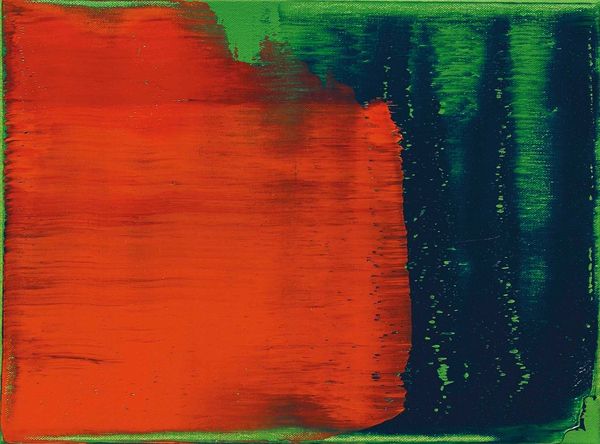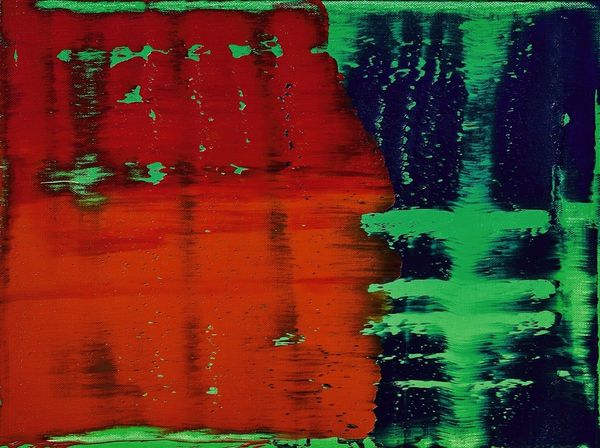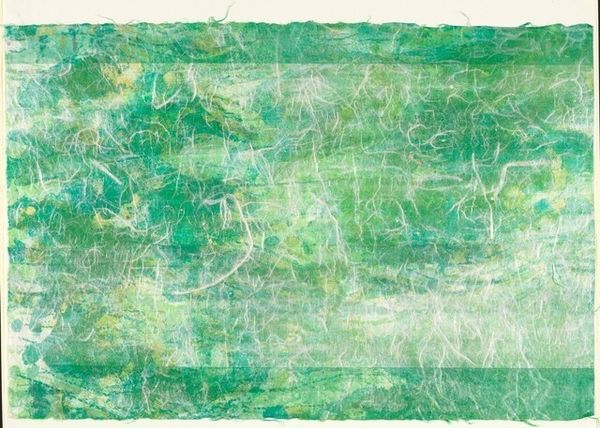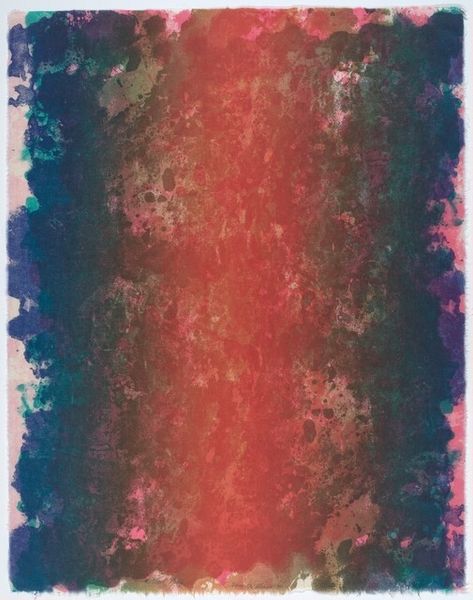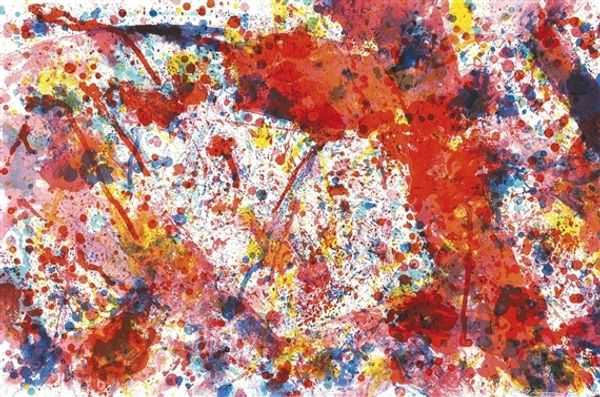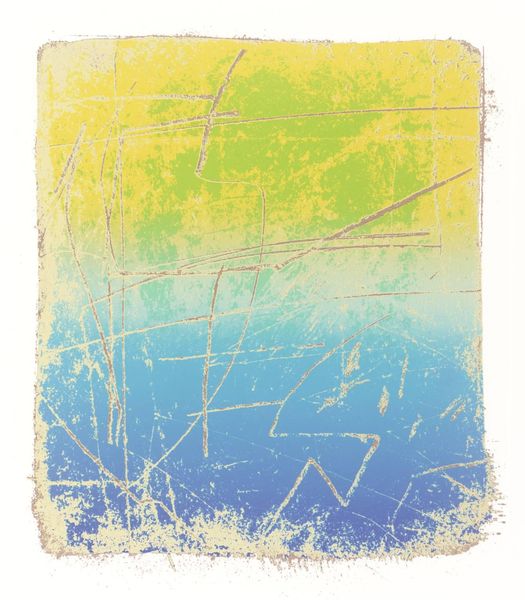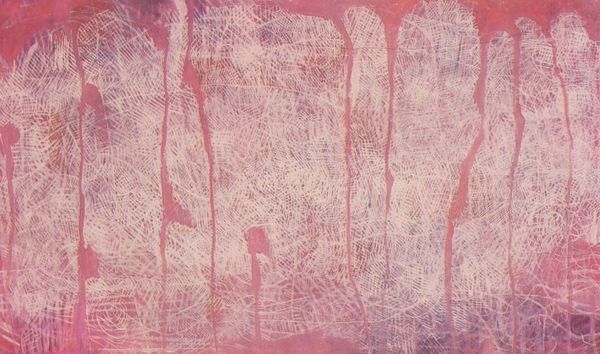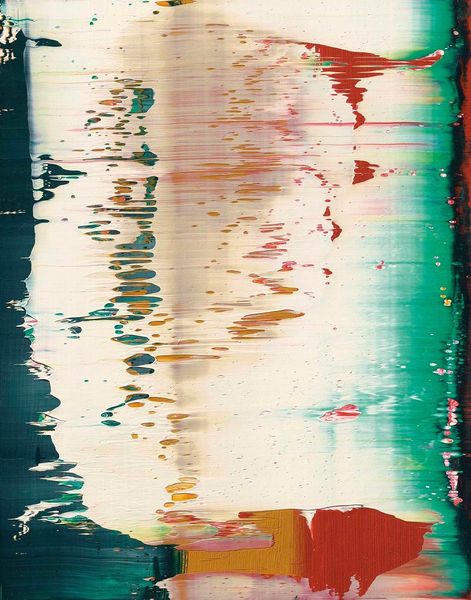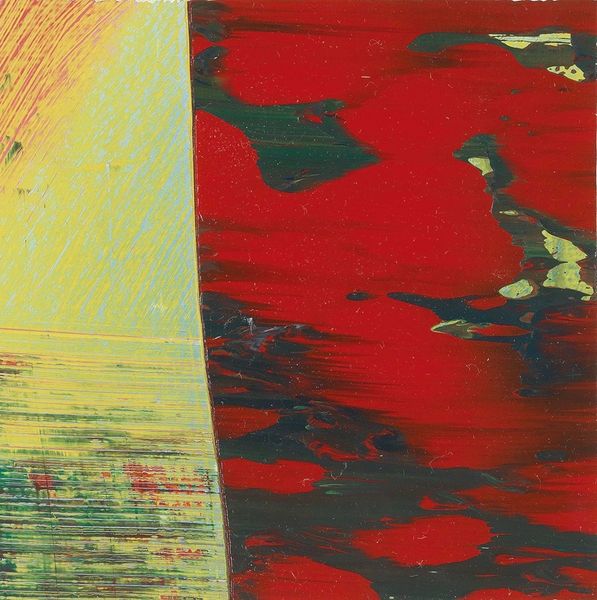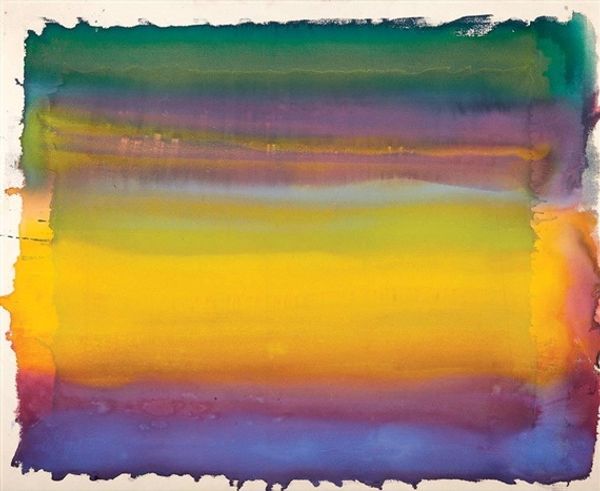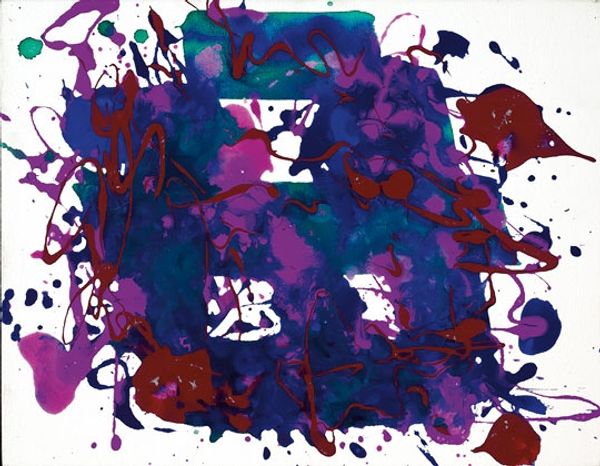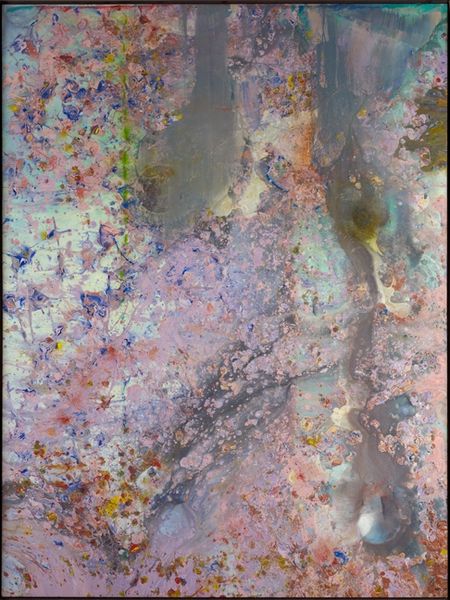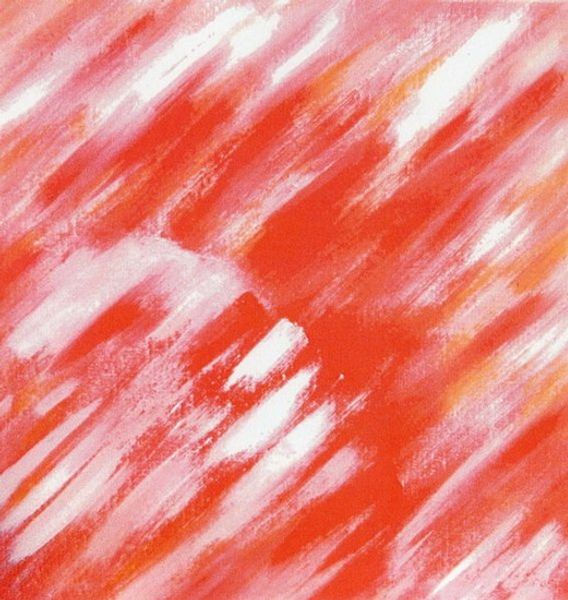
#
washington-colour-school
Dimensions: sheet: 49.85 x 61.6 cm (19 5/8 x 24 1/4 in.)
Copyright: National Gallery of Art: CC0 1.0
Editor: This is Sam Gilliam's "Fire (artist proof)," from 1971, a mixed-media print using acrylic paint. It's primarily a horizontal wash of color, shifting from blue at the top and bottom to a vibrant orange in the center. The texture looks almost organic. What do you see in this piece, especially considering the historical context of Gilliam's work? Curator: What I find striking about "Fire" is its embodiment of radical freedom, deeply intertwined with the socio-political landscape of the 1970s. Gilliam, as an African American artist working during the Civil Rights Movement, utilized abstraction as a powerful form of expression. Consider how color field painting itself challenged representational norms, becoming a space for marginalized voices to assert their presence without conforming to dominant narratives. How does the title "Fire" resonate with you in relation to this historical backdrop? Editor: I suppose I initially saw "fire" in a literal sense, but now I’m wondering if it speaks to the era’s social unrest, a burning desire for change. Is that what you mean by "radical freedom"? Curator: Precisely! It's about reclaiming artistic space, refusing prescribed styles. The seemingly simple wash becomes a charged territory. What does the blurring of the colors suggest to you about the artist's process and intentions? Does it reinforce the ideas around freedom and resistance? Editor: It feels uncontrolled, fluid, maybe even defiant. Like he's pushing back against expectations. Curator: Absolutely. Gilliam disrupted traditional art-making conventions, inviting chance and improvisation. This embrace of fluidity mirrors the era’s questioning of rigid social structures. Seeing it that way, how does that change your perception? Editor: I understand it less as a landscape and more as a statement. The beauty is almost secondary to the message. Curator: That’s a key point. Gilliam beautifully wove aesthetics and activism. Understanding that art-making process as a form of rebellion offers new appreciation. Editor: I’ll never see abstract art the same way again. Thank you!
Comments
No comments
Be the first to comment and join the conversation on the ultimate creative platform.
